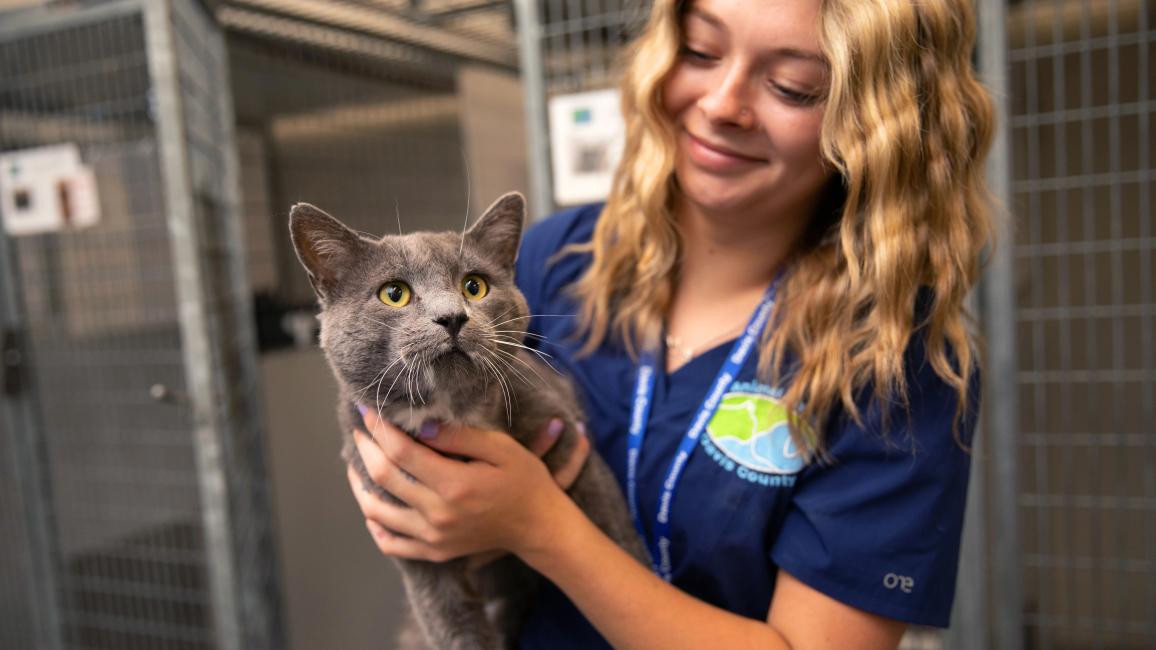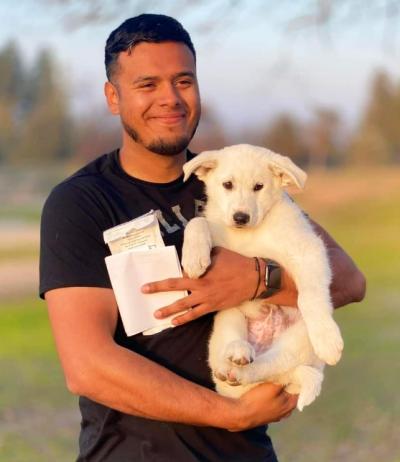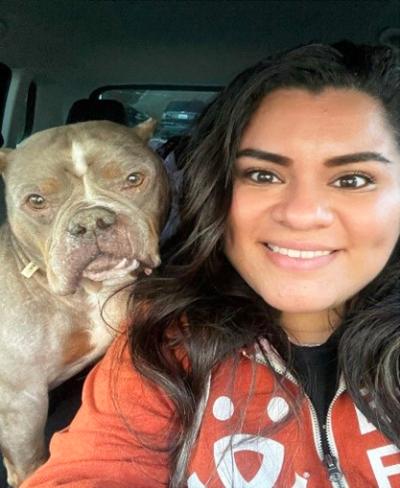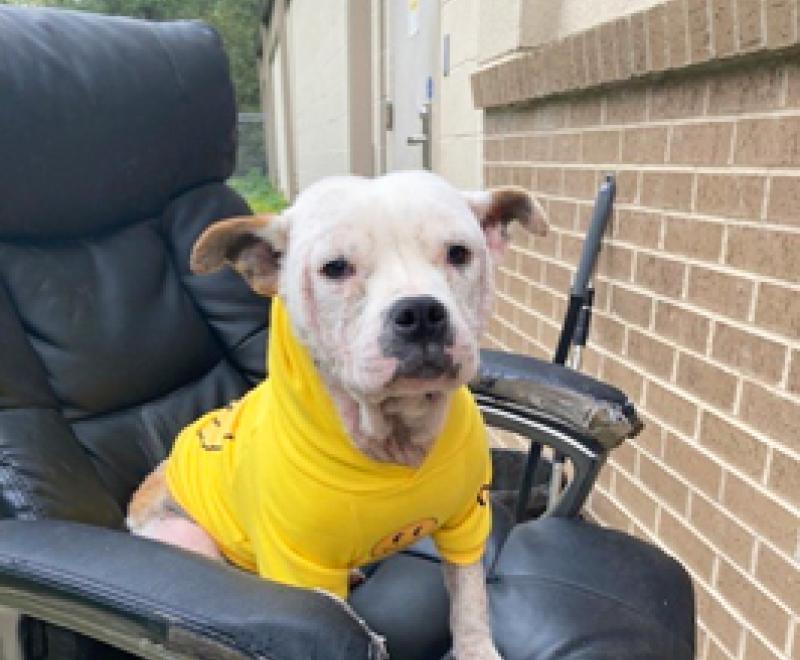Q&A: Best Friends national shelter embed program

As part of the effort to take the nation’s animal shelters to no-kill by 2025, Best Friends has a number of programs to support shelters and reach that goal. One of them is the national shelter embed program (made possible in part by a grant from Maddie’s Fund®), which places Best Friends staff in leadership positions at shelters to work alongside the shelter staff and support them in reaching no-kill.
The embed program at Best Friends has roots dating back to 2011, and it’s gained more traction in recent years as the self-appointed deadline to take the nation to no-kill gets closer. In the following question-and-answer interview, we asked Michelle Logan, director of Best Friends national shelter embed program, about how it is supporting shelter staff to save more dogs and cats every day.
What are the most important factors in deciding to send an employee from Best Friends to work with another organization?
Two of the most important things are where we can make the most impact on lifesaving and if we have reciprocity of relationship established with an organization. We want to know that an agency has the ability and commitment to follow through on projects. This includes the shelter’s potential for reducing the number of dogs and cats killed; a willingness to learn and embrace our advice; a desire to get closer to no-kill; and the ability to be engaged, be responsive, and document lifesaving statistics.
[How shelter embed programs are saving pets’ lives]
Another critical element is the receptiveness of the shelter’s leadership, including external leadership such as a local city council, board of directors, etc. An embedded employee is there to help an organization power forward to achieve lifesaving progress. Sometimes that starts with foundational programming, and other times it’s making tweaks to existing programming to take the final steps. For example, they might be at a 25% save rate and need to implement modern programming, or they might be at an 81% save rate but just can’t seem to get over the hurdle of 90%, which is considered no-kill. We want our embeds to go in and help an organization get across that finish line.

How is the embed program different from everything else we do at Best Friends?
While everything we do is related to lifesaving and reaching no-kill by 2025, what’s truly unique is that when we send a staff person to be embedded with an organization, that Best Friends employee actually becomes part of a local shelter team. The person might be there for a few months or as long as 24 months, working right alongside shelter employees. While saving lives is the overall goal, our people are there to help them implement best practices and support them along the way, so they can reach their own goals and make adjustments that will enable the shelter to reach no-kill.
How do you balance what the shelter staff expects from the embed program with what the shelter actually needs?
Good question, because sometimes what they think they want might not be what they need. We have to take into account whether the organization is receptive to all the areas needed to get them to no-kill, such as specific programming, ordinance changes, reorganization of shelter staff and duties, creation of new protocols and policies, etc. Our team has technical knowledge of animal welfare, but we also bring the interpersonal skills to build trust so an agency’s employees are willing to try new things. Once they do, they are able to move forward and achieve goals that in the past were elusive. And it ultimately means they’re saving more lives.
What is the main challenge facing every embedded employee?
The biggest one is being able to help an organization deal with change. Changing the way you work is never easy, especially if you’ve been doing things the same way for many years. And since our employee is right in the middle of the shelter’s business, things can get intense. Best Friends embed staff must be part expert, part diplomat. On top of that, there are policy barriers, personnel matters, and governmental issues ― all sorts of challenges that make it difficult for an organization to make changes.

How does a shelter’s staffing situation affect an embedded employee’s assignment?
For an embed to be successful, it’s important that there be adequate staff, knowing of course that most all shelters are short-staffed. Embedded staff typically are not there to provide emergency coverage for shelters with staffing shortages, but they are there to facilitate change at a leadership level.
What are the most important qualities of an embedded employee?
Our Best Friends embed staff members must have the interpersonal skills to get along with a wide variety of people, from the newest employee all the way up to senior management. They have to have solid leadership experience in animal welfare and be a total chameleon willing to jump in and clean kennels with the team, grab a bite to eat and a quick change on the run, and then professionally advocate to key stakeholders.
[Embed program helps California kitten rescue expand fundraising]
This requires wide-ranging skills to (if necessary) be involved in everything from organizational structure to daily operations. As a result, we’re leading and being the change right alongside the team.
What’s the most common problem facing shelters, and how can an embedded employee help?
Shelter staff get caught in what I often call the corn maze. They might start a new program by going down one path, and then they hit a dead end. They might try something new that doesn’t work. And even though the staff is working as hard as possible, attending conferences and doing research, they can’t seem to reach their goals. Sometimes they are working on something without the full support of their agency.
Kudos to them for trying, but every one of those dead ends forces them to turn around and backtrack. Sometimes they just give up, and even if they don’t give up, every dead end represents animals’ lives lost along the way. When we come in with our program, we’re able to help them evaluate their current reality, meet them where they're at, and then use all the industry expertise that’s out there to help them plow from start to finish, without having to navigate the maze.

Can you give an example of how an embed can help a shelter’s employees feel better about their jobs?
The most rewarding thing we see is how we are often able to lift the spirits of shelter staff. We recently completed an embed at Prattville/Autauga Humane Society in Alabama and received the following comments: “Best Friends is the best thing that has ever happened to our shelter.” “The amount of lives we were able to save in the time the embed was here helps me to sleep at night.” “I won’t lie. I really wasn’t onboard (at first). I didn’t want this huge company to come in … and put on a show for the public. I could not have been more wrong.”
People get into animal welfare because they love animals and want to help them. But limited staff, stretched budgets, and other pressures often prevent them from really enjoying the work they signed up for. Many times, the embed staff are able to help shelter employees clear their path of challenges. Once this happens, we notice that we are able to restore the same joy to their work that got them into animal welfare in the first place.
What has been the key so far to the success of the embed program?
It’s the varied experience of the people on our team. They all bring different skills and many years of experience in animal welfare. And because they all bring different talents, no one person has to carry the load. You don’t have to be a jack-of-all-trades because there’s always someone to help fill in a specific area of need. That allows us all to learn and grow with each other. We’re able to just blaze forward together and, in the process, save a ridiculous amount of animal lives.






